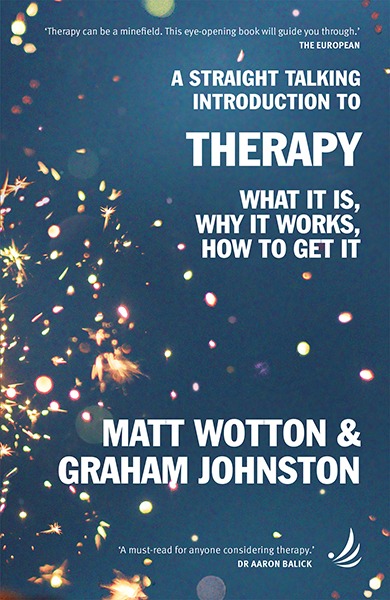
At the age of 22, my outlook on the future was somewhat unclear, yet when asked, I could pinpoint five key aspirations: I wished to pursue a career in art. I dreamed of marrying someone, likely another artist. I envisioned having a minimum of two children. I hoped to spend the rest of my life in Brooklyn, surrounded by family and my college pals. I yearned to eventually own a house in the Catskills, a place for family gatherings every summer.
Now, let me reveal how many of those aspirations I realized: just one. One! Yes, I am an artist.
Yet the rest?
The actor-boyfriend I thought I would marry throughout my twenties? We parted ways at 33. I wed my current husband at 34, who is certainly not in the artistic field. Marrying him led to leaving Brooklyn for Europe and then Los Angeles.
The two kids I desired? I ended up with only one, bringing both immense joy and heartache into my life.
That Catskills home? Perhaps it will remain a dream.
Numerous aspects of my life haven’t unfolded as I had envisioned: my marriage is — like many — more intricate than just “I do.” I often feel dissatisfied with my career progress, partly due to managing the majority of the childcare in our household. Living in L.A. means I spend a significant amount of time driving. Additionally, my aging parents and most of my long-term friends live far away.
These are the difficult aspects, yet there is also an abundance of unexpectedly delightful experiences: my daughter and I share an exceptionally close bond, perhaps because she is an only child. My logical husband has a secure job that grants me the freedom to pursue art. Relocating to L.A. has allowed me to be just an hour away from my sister for the first time since childhood. My family has created a supportive community of friends on the west coast that has been crucial to our lives for the past ten years.
It’s a life I cherish. And yet, at times, I truly despise it.
****
The other day, I was rambling to my therapist about this very subject, expressing my surprise and sadness over how various aspects of my life have turned out, even as I felt grateful for many of them.
She interrupted me. “Midlife,” she noted, “is fundamentally about managing the tension of opposites.”
Wait, what?
It was one of those enlightening moments in therapy where time seems to pause for reflection.
Midlife is fundamentally about managing the tension of opposites.
Unlike our twenties, focused on the future — securing jobs, dating, establishing careers and/or families, traveling, striving to make a difference in the world — this phase revolves around embracing the light and dark, the good and bad, simultaneously. For many of us, it signifies a blend of happiness and unexpected disappointments. Perhaps a marriage has dissolved, or dreams of having children haven’t materialized. Maybe health issues plague aging parents. Perhaps we found ourselves in surprising careers that bring us significant joy. Or maybe our second marriages are flourishing compared to the first!
At this life stage, she explained, we’re reconciling our expectations of life with reality.
My insightful therapist’s message: this reality is unavoidable. Welcome to midlife.
Admittedly, there’s a challenge in this realization, yet it also brings a small sense of relief. One of the most enlightening insights my therapist shared regarding the balance of lightness and heaviness involved a seemingly minor issue: my husband will be away for extended periods this year due to work, and I’m already feeling concerned about it.
“You’ll miss him while he’s away, and at times, you won’t miss him,” she remarked, “and both reactions are perfectly acceptable.”
Both are acceptable! If that isn’t a phrase to guide me through midlife, I don’t know what is.
Abigail Rasminsky is a writer and editor located in Los Angeles. She teaches creative writing at the Keck School of Medicine of USC and authors the weekly newsletter, People + Bodies. Additionally, she has contributed to Cup of Jo on various subjects, including marriage, preteens, perimenopause, and only children.
P.S. Relishing an empty nest, nine reader responses on aging, and how would you define yourself in five words?
(Images of Tina Fey and Amy Poehler from Amy’s podcast Good Hang.)
**The Therapist’s Guide to Navigating Midlife**
Midlife represents a critical period in the human lifespan, frequently characterized by significant transitions and self-reflection. As individuals enter their 40s and 50s, they may face a range of emotional, psychological, and physical alterations. For therapists, assisting clients through this phase necessitates a nuanced comprehension of the challenges and possibilities that midlife brings. This guide seeks to equip therapists with insights and techniques to effectively support clients during this journey.
**Understanding Midlife: A Multifaceted Transition**
Midlife often entails a reevaluation of life ambitions, accomplishments, and personal identity. Clients may go through what is commonly termed a “midlife crisis,” a time marked by uncertainty and anxiety regarding their life’s trajectory. This can arise from numerous influences, such as career changes, aging, health issues, or alterations in family dynamics. Therapists should acknowledge that midlife isn’t just a time of crisis but also a stage ripe for personal development and transformation.
**Common Hurdles in Midlife**
1. **Identity and Self-Examination:** Clients may scrutinize their life choices and yearn for a deeper comprehension of their identity. This reflection can spark a quest for growth or a shift in life trajectory.
2. **Career Shifts:** Many individuals reconsider their career paths as they reach midlife, pondering job transitions, retirement, or pursuing new interests.
3. **Family Dynamics:** Alterations in family roles, such as children moving out or caring for elderly parents, can significantly affect clients’ emotional health.
4. **Health and Aging:** Physical changes and health concerns become increasingly evident, leading to heightened anxiety about aging and mortality.
5. **Relationship Changes:** Marital satisfaction may vary, and some clients may confront separation or divorce, necessitating support in navigating these transitions.
**Therapeutic Strategies for Midlife Clients**
1. **Cognitive Behavioral Therapy (CBT):** CBT assists clients in reframing negative thought patterns and cultivating healthier coping methods for midlife stressors.
2. **Existential Therapy:** This approach encourages clients to contemplate existential queries regarding meaning and purpose, fostering a richer understanding of their life path.
3. **Mindfulness and Acceptance:** Mindfulness techniques can help clients remain present and embrace ongoing changes in their lives, mitigating anxiety and enhancing emotional resilience.
4. **Narrative Therapy:** Guiding clients to retell their life narratives can empower them to perceive midlife as a chapter of growth and opportunity rather than a crisis.
5. **Solution-Focused Brief Therapy (SFBT):** SFBT can help clients identify and utilize their strengths to foster positive change and achieve their objectives.
**Assisting Clients in Midlife**
1. **Normalize the Experience:** Aid clients in recognizing that midlife transitions are a natural part of life and that they are not isolated in their feelings.
2. **Encourage Exploration:** Support clients in delving into new hobbies, interests, or career paths that resonate with their shifting values and goals.
3. **Foster Resilience:** Collaborate with clients to enhance resilience by building coping mechanisms and encouraging a positive outlook on aging and transition.
4. **Promote Self-Care:** Highlight the significance of both physical and mental self-care, encompassing exercise, nutritious eating, and stress-management techniques.
5. **Facilitate Communication:** Foster open dialogue with family members and partners to navigate relationship shifts and reinforce support networks.
**Conclusion**
Navigating midlife may present challenges, yet it can also be a fulfilling voyage for clients. As therapists, offering empathetic support, actionable strategies, and a secure environment for exploration empowers clients to face this life phase with assurance and optimism. By grasping the unique challenges and opportunities of midlife, therapists can guide clients toward a rewarding and meaningful second half of life.



